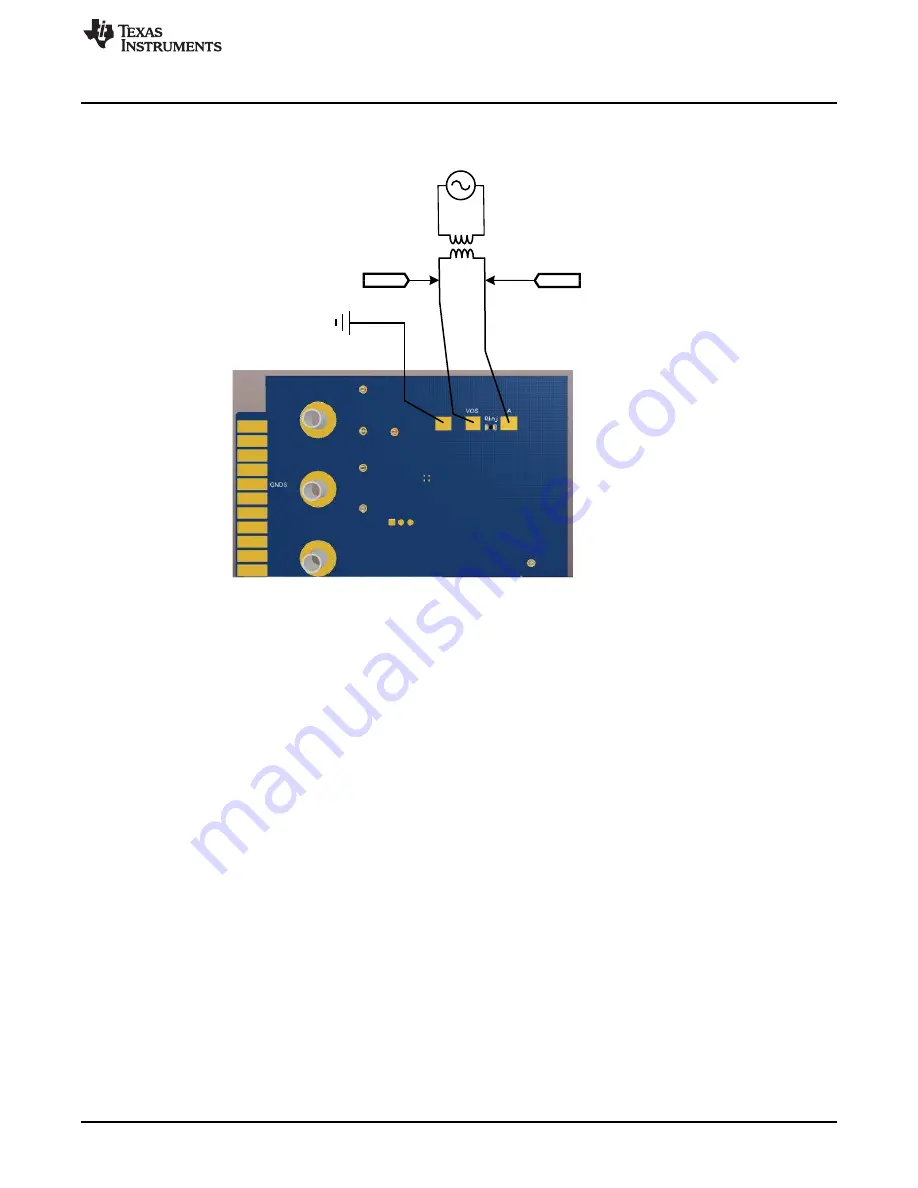
OSC
B
A
Signal
Injection
³%´ ,QSXW WR
network analyzer
³$´ ,QSXW WR
network analyzer
Operation
5
SNVU573A – August 2017 – Revised March 2018
Copyright © 2017–2018, Texas Instruments Incorporated
LMR33630 EVM User’s Guide
Figure 4. FRA Set-up
2
Operation
Once the above connections are made and the appropriate jumpers are set, the EVM is ready for use. If
external control of the EN input is desired, remove the EN jumper, and apply the external signal to the EN
test point and GND. The PGOOD output is pulled up to VCC through a 20-k
Ω
resistor. In this way the
PGOOD signal swings from 0 V to about 5 V to indicate when the output voltage is either outside or inside
of the PGOOD window, respectively. If an external pullup and supply is desired for the PGOOD function,
remove the 20-k
Ω
resistor, and pull the PGOOD test point up to the desired voltage through an
appropriate resistance. See the LMR33630 data sheets for more details.
The output voltage of the EVM can be selected, by the VOUT jumper, to either 3.3 V or 5 V. Other values
of output voltage can be programmed by changing the value of R
FBB
on the EVM. In addition the values of
the inductor and the output capacitance may also need to be changed. See the LMR33630 data sheets for
more information.
The EVM has been designed for maximum flexibility regarding component selection. This allows the user
to place prefered components, such as the inductor and/or capacitors, on the board and test the
performance of the regulator. In this way the power supply system can be tested before committing the
design to production.






































